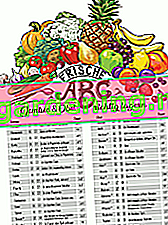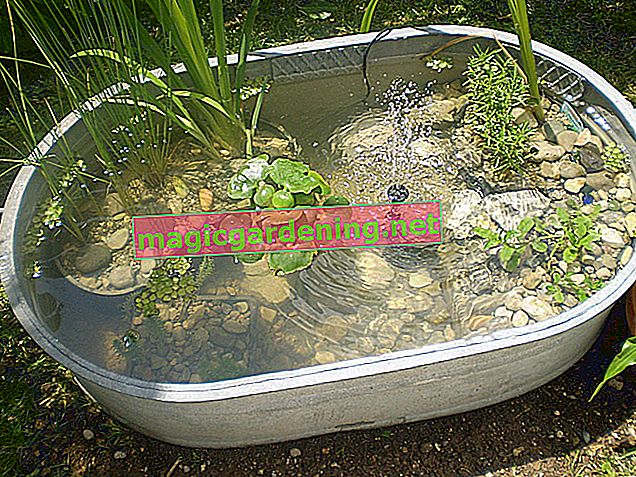
General tips for freezing lasagna
Did you know from the beginning how to create more lasagna than you will eat (immediately)? Then use a freezer-friendly lasagne recipe. Specifically, this means that you should only use fresh ingredients, not frozen ones. Otherwise you risk contaminating the lasagna with bacteria by defrosting, re-freezing and defrosting. Also for the taste and consistency, it is better to freeze lasagna made from fresh ingredients.
also read
- The correct way to transplant climbing roses - step-by-step instructions with valuable tips
- Freezing spring onions - instructions and tips
- Freezing tofu - instructions and basic information
Layer your lasagna directly in a suitable container that is suitable for both baking and freezing. A large part of the forms made of glass or ceramic meet this requirement. Under no circumstances should you use aluminum bowls. The lasagna could take on a metallic aroma in such a vessel - not very appetizing. If you don't have an element that can be used for baking and freezing, you have to reposition the lasagna before and after freezing (from your baking pan to the freezer-safe container and back).
Whether you freeze the lasagna before or after baking does not play a decisive role in terms of taste - but it does in terms of preparation. A baked lasagna has to be brought to room temperature before freezing. This means that you have to let the delicacy cool completely first. Otherwise your lasagna will lose quality in terms of both consistency and taste. You do not need to do anything if the food is to be baked after it has frozen.
How to properly freeze your lasagna
- Cover the lasagna as airtight as possible with freeze-proof plastic wrap. Wrap it in several layers so that it stays nice and fresh (it is best to wrap the foil around the whole jar to avoid holes and thus freezer burn). Do not use aluminum foil - it could seriously affect the taste of the lasagna.
- If you have a very large amount of lasagna, it makes sense to portion it. Each portion is then given its own container. This has the advantage that you can eat a piece of lasagna as a snack if you are slightly hungry. Cut your creation into portions only after it has cooled down. The individual pieces fall apart less.
- Label the container or containers with the date to keep track of things (for shelf life).
- Put the lasagna in the freezer.
Note: Lasagne can be kept in the freezer for up to three months - with or without meat.
How to properly defrost your lasagna
- Take the lasagna out of the freezer the evening before you plan to eat it to let it thaw in the refrigerator overnight.
- If you bake partially frozen lasagna, it will be heated unevenly, which will damage both the taste and the texture.
- Preheat the oven to 175 degrees Celsius (ideal regardless of the recipe!).
- Remove the plastic wrap from the lasagne container.
- If necessary, transfer the lasagne to a baking pan.
- Cover the top of the baking pan with aluminum foil. This will prevent the top layer from becoming excessively dark.
- Put the lasagne in the oven and bake in it for about 40 to 60 minutes.
- Remove the aluminum foil for the last ten minutes of the baking process to achieve a delicious, crispy crust.
- Sprinkle the lasagna with fresh basil or oregano and serve.

The garden journal freshness-ABC
How can fruit and vegetables be stored correctly so that they stay fresh as long as possible?
The garden journal freshness ABC as a poster:
- Order here cheaply as an A3 print for your kitchen
- as a free PDF file to print out yourself








